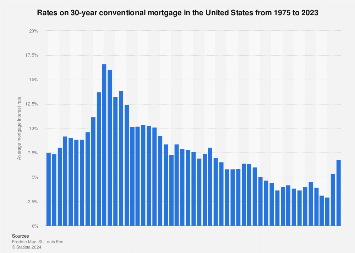
After a period of gradual decline, the average annual rate on a 30-year fixed-rate mortgage in the United States rose to 6.81 percent in 2023, up from the record-low 2.96 percent in 2021. The rate for 15-year fixed mortgages and five-year ARM mortgages followed a similar trend. This was a result of the Federal Reserve increasing the bank rate – a measure introduced to tackle the rising inflation.
U.S. home prices going through the roof
Mortgage rates have a strong impact on the market – the lower the rate, the lower the loan repayment. The rate on a 30-year fixed-rate mortgage decreasing after the Great Recession has stimulated the market and boosted home sales. Another problem consumers face is the fact that house prices are rising at an unaffordable level. The median sales price of a new home sold surged in 2021, while the median weekly earnings of a full-time employee maintained a more moderate increase.
What are the differences between 15-year and 30-year mortgages?
Two of the most popular loan terms available to homebuyers are the 15-year fixed-rate mortgage and the 30-year fixed-rate mortgage. The 30-year option appeals to more consumers because the repayment is spread out over 30 years, meaning the monthly payments are lower. Consumers choosing the 15-year option will have to pay higher monthly payments but benefit from lower interest rates.






